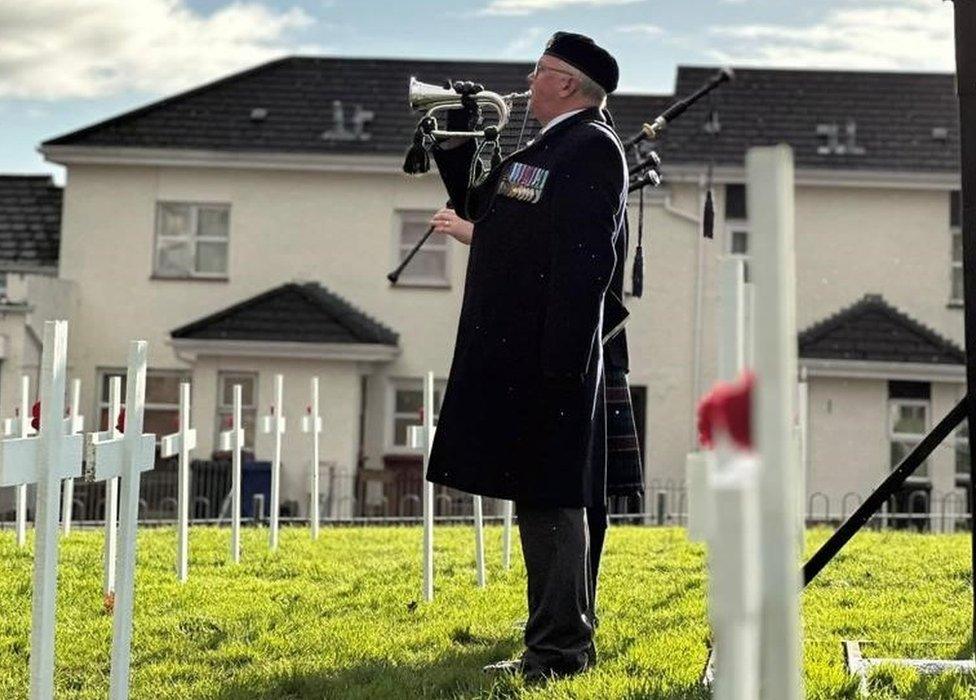Armistice Day: 'I think of the friends I’ve lost' - D-Day veteran
- Published
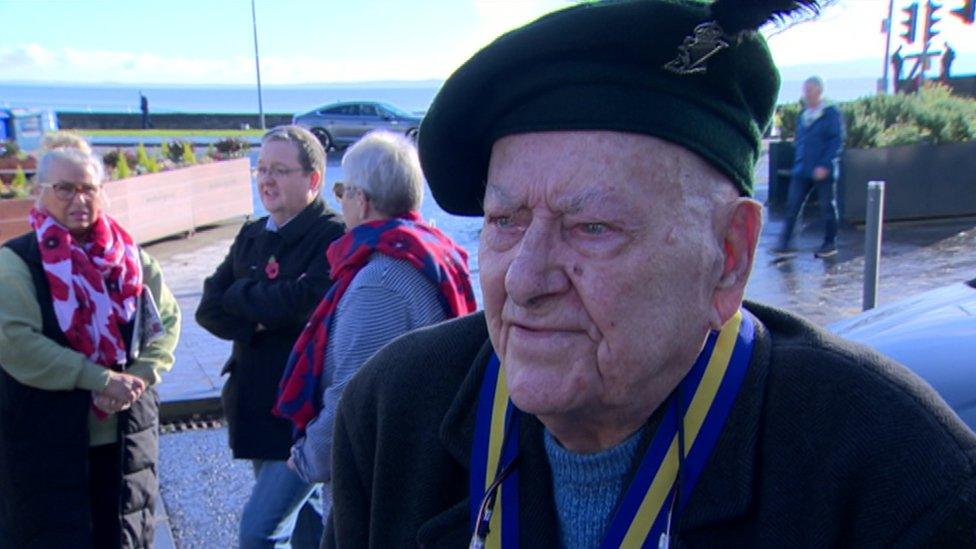
George Horner said it was "very, very important" to remember his comrades who were killed in the Second World War
"It's a day of remembrance. You remember all your friends - departed friends, the ones you lost."
At 97 years of age, former World War Two soldier George Horner still turned up for duty to pay tribute to his fallen comrades on Armistice Day.
The D-Day veteran was among those who observed a two-minute silence at a remembrance ceremony in Carrickfergus.
Ceremonies also took place in towns and cities across Northern Ireland, including Belfast.
Mr Horner was a young teenager when the Second World War began in 1939.
He joined the Royal Ulster Rifles during the war and was deployed to fight in German-occupied France.
On D-Day, 6 June 1944, he was in his late teens when he landed on Sword Beach as part of the co-ordinated Allied invasion.
You remember all your friends
Speaking to BBC News NI, he recalled the death and horror that he witnessed on that day.
"Shocking - it was like a cemetery looking all round me," he said.
"When you join the Army you take your chance along with the rest of them, you know?"
Mr Horner said it was "very, very important" to attend Armistice Day ceremonies.
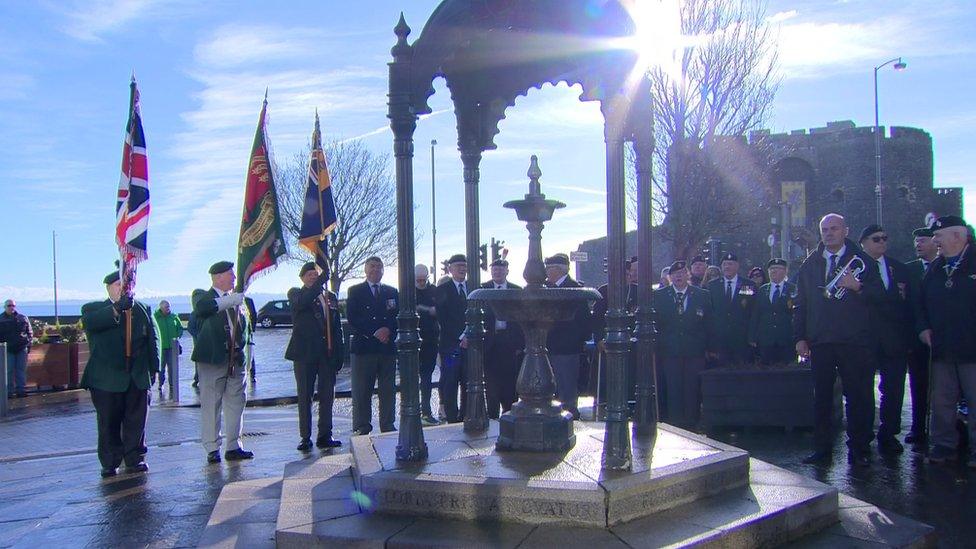
The sun shone for the Carrickfergus ceremony
"It's a day of remembrance. You remember all your friends - departed friends, the ones you lost," he said.
"I think of the friends I've lost, good friends, but that's the chance you had to take."
So how had he managed to cheat death on such a dangerous mission?
The nonagenarian had a cheeky laugh as he shared one of his survival tips.
"I always tried to get behind a bigger man than me - you know the reason why.
"Maybe that's why I'm here."
'Significant event'
In Belfast, Lord Mayor Ryan Murphy, of Sinn Féin, took part in the remembrance ceremony at the Cenotaph, saying it was important to commemorate the "huge loss that the city suffered as a result of the First World War".
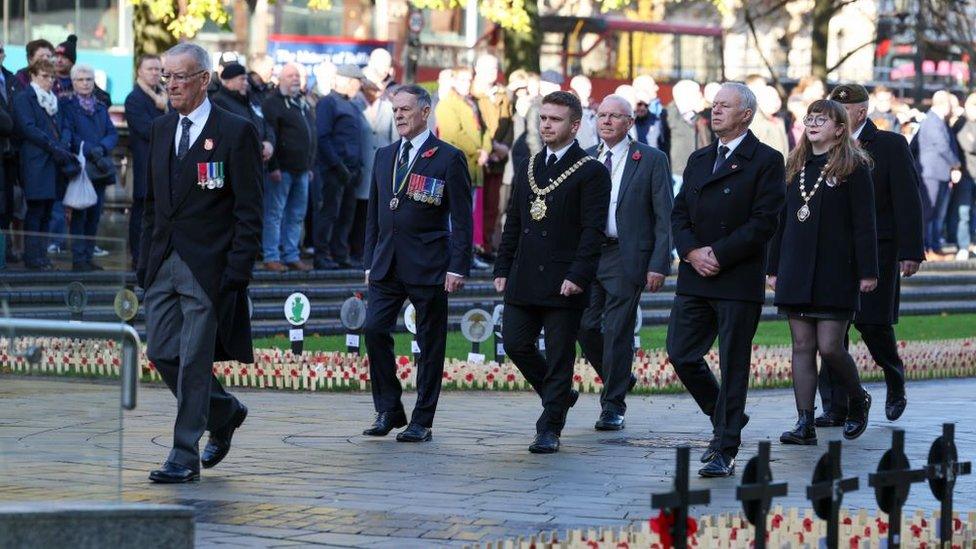
Belfast Lord Mayor Ryan Murphy (centre) said his participation in the event showed Sinn Féin was "reaching out the hand of friendship"
"We all know that Armistice Day has become a very significant event in the calendar of the city," he said.
"So it is right and property that we're here at the Cenotaph at Belfast City Hall to remember them in that dignified and respectful way."
His party has been marking Armistice Day in some form since 2002, when Alex Maskey became the first Sinn Féin mayor to lay a laurel wreath, external in memory of Irishmen who died fighting in the British Army in the world wars.
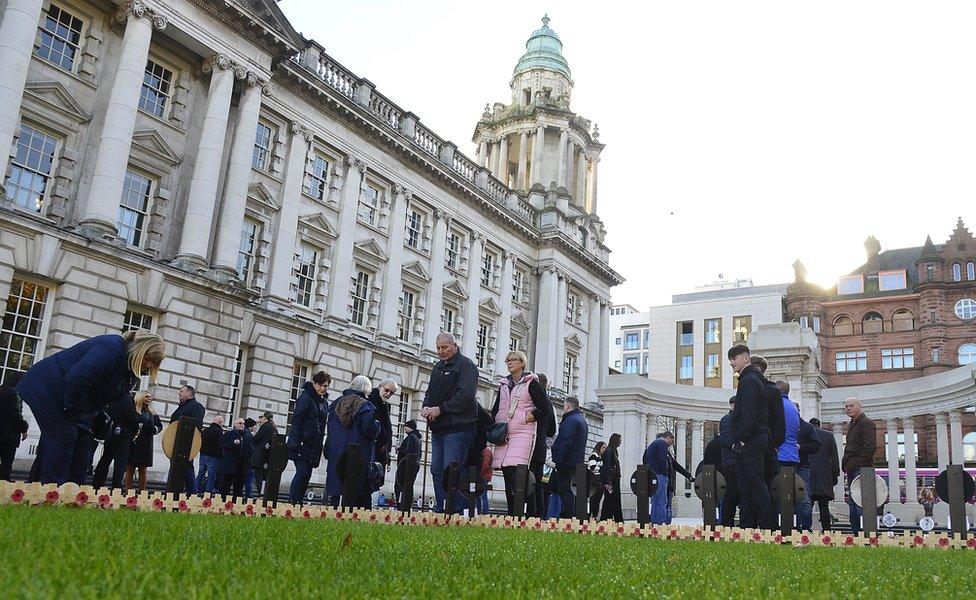
Small wooden crosses have been placed in the grounds of Belfast City Hall in memory of fallen servicemen
Mr Murphy acknowledged that he was "following in the footsteps" of previous Sinn Féin mayors who had paid their respects during remembrance events.
"When I came into post back in June, the commitment that I gave to the people of Belfast [was] that I would be a mayor for all," he said.
"I think today's event is another one of those chances to show that we are on that reconciliation journey and it is a genuine attempt at reaching out the hand of friendship to all of those people who think Armistice Day is a significant event for them."
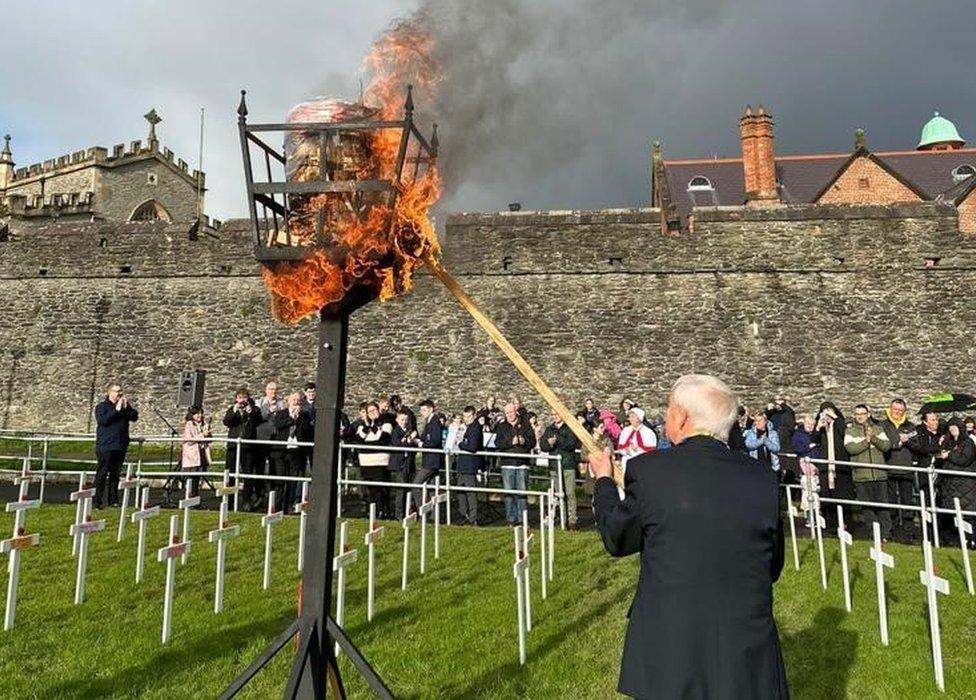
A beacon was lit in Londonderry on Friday
Remembrance events are being held across Northern Ireland this weekend.
Earlier, on Friday, crowds gathered at The Fountain in Londonderry to remember locals killed during World War One.
Primary school pupils and members of the community collaborated with the Building Cultural Networks project to create 100 white crosses with poppies.
Ninety-nine of the crosses were dedicated to individuals from The Fountain area, with pupils researching their family ties to the names they hand-painted.
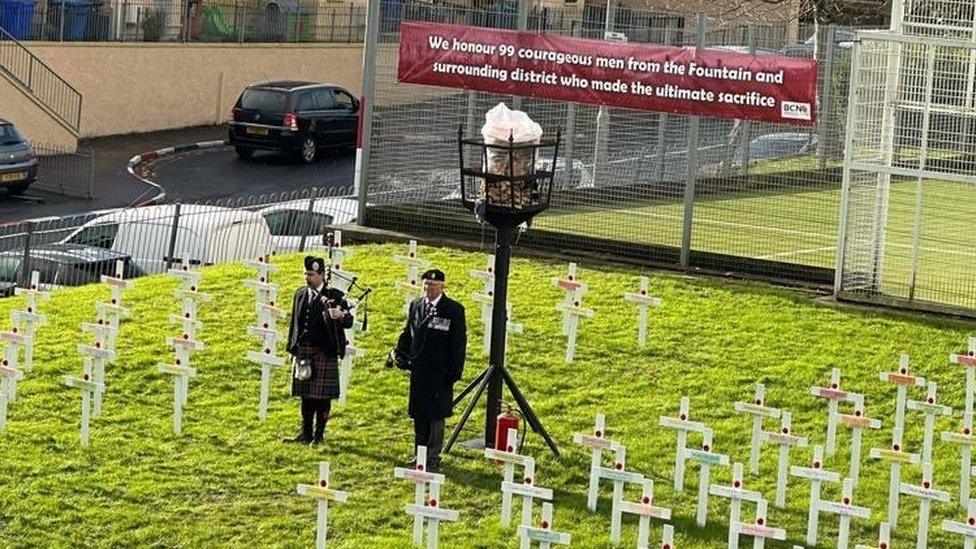
Organisers said the white crosses are a "stark reminder" of those who died during World War One
"The last cross is for anyone who comes to view this display. If they have a loved one, and their name is not on the crosses, then they can pay their respects and be part of this project," project co-ordinator Mark Roxborough explained.
He said the display is "a visual representation" of some of the lives lost, allowing spectators to "take stock and see the sacrifice that was made".
